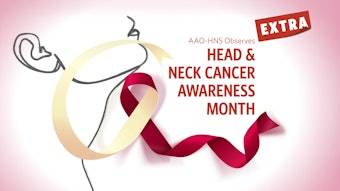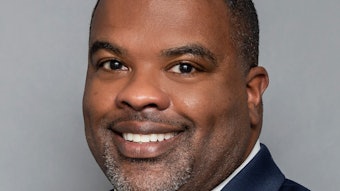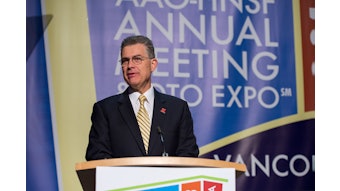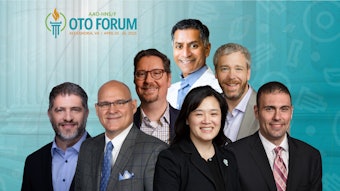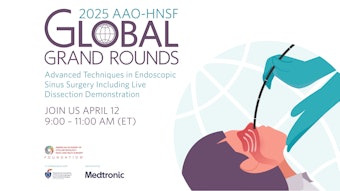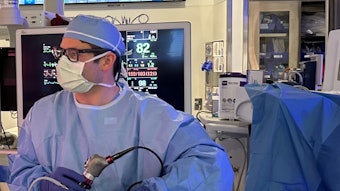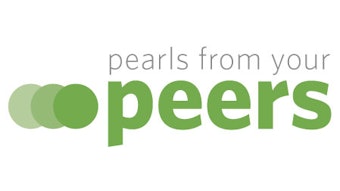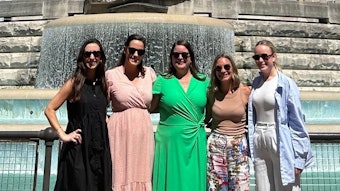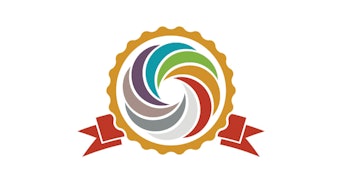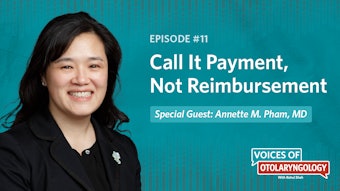ACADEMIC APPEAL: A Call to Our Academic Community
We need to work collectively to create meaningful impact; we can do this at scale through the AAO-HNS
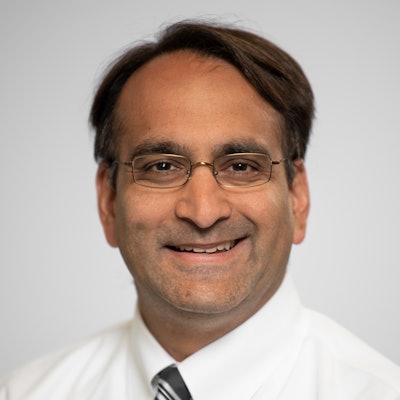 Rahul K. Shah, MD, MBA
Rahul K. Shah, MD, MBA
AAO-HNS/F Executive Vice President and CEO
Your Academy needs you. Your private practice colleagues ask for you and your contributions. And, importantly, you need us too.
I trained in Boston from 2000 to 2006, rotating through internship at St. Elizabeth's Medical Center, residency at Tufts University, and fellowship at Boston Children’s Hospital. Boston is a medical town where the respect between private practice and academics is palpable, appreciated, and results in outstanding advocacy, innovation, and collaboration.
A unique cornerstone of our residency was spending nearly half our time rotating through private practice settings—exceptional groups that served Level I trauma centers, cared for highly complex patients, ran tumor boards, and stood as pillars in their communities.
I would not be your EVP/CEO if not for those rotations. They instilled in me a core value—we are one. The commonalities in our specialty far outweigh the forces that divide us. At the recent Triological Society Winter Meeting, I witnessed this unity in action. Within 15 minutes, a prominent academician approached me saying, "Welcome to your role. Don't forget about the private practices—they need the Academy." And then, as I was leaving, a senior private practitioner advised, "Remember, the academicians are important to the success of the Academy."
I couldn't be more encouraged. Each of us looks out for the other. Our role at the Academy is to find common ground and ensure we represent all members through our leadership structure. We must stay mission-driven instead of getting distracted by peripheral topics or side projects.
The Value Proposition: Let's Do the Math
Recently, I met with leaders from both private practices and academic settings at The College of Physicians of Philadelphia. (Our member Erica R. Thaler, MD, is the Chair of the Board of Trustees. I encourage you all to visit the Mütter Museum when there; it is one of the most amazingly curated museums for medicine I have seen). I posed a rhetorical question to the academic leaders about the Academy's value proposition.
Consider this: A large academic department might have 30 faculty members. If all are members, attend the Annual Meeting, and participate in Academy offerings, the annual "expense" may be approximately $75,000. For a practice generating $40 million in revenue, this represents 0.19% of total revenue.
Is that investment worthwhile? Let me illustrate with one example: The Academy continually works to ensure fairness in Relative Value Units (RVUs) scales. Without our advocacy, these values would steadily decline as we are in constant discussions with other specialty societies regarding RVUs. Many academic centers use RVU targets for salary and at-risk compensation. If we fail in these discussions, academicians will literally need to work harder to generate the same RVUs.
Regarding Medicare Physician Fee Schedule advocacy—academic medical centers see many Medicare patients. A 2.5% reduction in the fee schedule significantly impacts your practice. In our example of a practice generating $40 million in revenue, if 60% of that revenue comes from Medicare, a 2.5% reduction equals a $600,000 impact.
This issue hits academic departments particularly hard, as they typically don't benefit from ancillaries as private practices do. As one AAO-HNS board member brilliantly stated, "The revenue from my practice of seeing patients continues to decline; our ancillaries are the only thing keeping us whole."
Standing Up for Academic Departments
Ancillary revenues never flow in entirety to academic departments. When administrators push to cut expenses like membership dues, remind them of the millions in downstream revenue your department contributes—surgery facility fees, inpatient admissions, pharmacy utilization, laboratory studies, radiology imaging, medical supplies, and more. At most major academic centers, otolaryngology drives a substantial margin.
Administrators often question the value of a $75,000 line item, suggesting, "You could hire a nurse navigator for this amount" or "You could hire a 0.5 APP and generate revenue instead." I vehemently disagree with this flawed, short-term approach. These same administrators often reclaim academic stipends or travel funds at year-end to subsidize underperforming areas elsewhere in the academic center. I have seen it over and over again in academic medical centers.
I know more academic centers than not that haven't increased their academic stipends in over a decade, while production targets have steadily risen! It's appalling that with the millions in downstream revenue generated by our specialty, these stipends remain flat or are even zeroed out to drive organizational EBITDA (Earnings Before Interest, Taxes, Depreciation, and Amortization).
Beyond Financial Value
If not you, then who? Your hospital certainly won't unilaterally contribute to the Academy financially or obviously cannot contribute with the cognitive and time commitments that you make. Only your department can use the Academy to drive faculty success—not just financially, but for promotions and professional development.
For me, the Academy provided my first poster presentation, my first oral presentation, my first committee assignment, and my first lobbying day. The Academy welcomes members and creates opportunities for growth. Our specialty is abundantly represented in academic medical center leadership—from top administrators to medical staff and surgical leadership. I truly believe that the Academy contributes, even if it is just a little bit, to that success by creating a framework and network for academicians to learn, lead, and advance through the academic process.
Our United Voice
In these challenging times, our voice must be heard through advocacy and legislative engagement. Dozens of bills at the state level need our attention; it's too time-consuming for those running large academic departments or private practices to track, synthesize, and coordinate advocacy efforts. That's our job at the AAO-HNS.
As one of the broadest and most influential specialties—caring for patients from birth to end of life, from office visits to ICU care, from history-taking to complex procedures—we face constant challenges from numerous directions. We need to work collectively to create meaningful impact; we can do this at scale through the AAO-HNS.
I am confident that for my academic colleagues, the value of Academy membership far exceeds its cost of 0.2% of top-line revenue.
We remain committed to enhancing this value proposition, as discussed in depth at our strategic planning meeting. At Academy headquarters, we maintain a "Day 1" mentality to ensure we advocate, innovate, and collaborate—continuously driving membership value up by improving quality and decreasing cost.
The Academy needs you. Your colleagues need you. And the future of our specialty and the patients we treat need your engagement.





